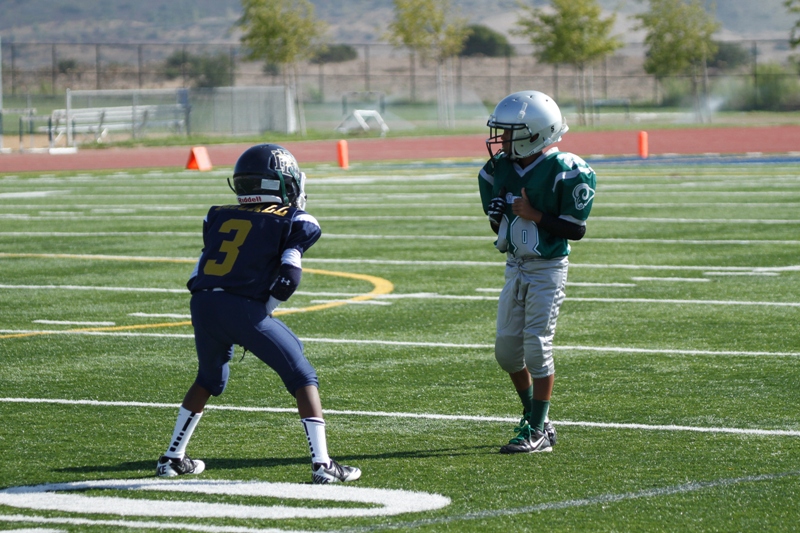Teaching a Proper Defensive Back Stance
A Defensive Back’s stance must be a comfortable position where the player can quickly move and adjust to the keys he sees in front of him. Each player tends to have their own version of the stance that is dictated by their body measurements and their athletic ability. As a result it’s important not to over coach the stance and to let the players find any stance where they are comfortable. With that being said there are a few universal points that all defensive backs must follow in order to have an effective stance.
Defensive Back Stance Technique
Feet & Hips
The feet are where the player connects to the ground and allows him to start moving. It’s important that the player aligns with a stance that will let him react quickly to whatever he sees from the offense. As a general rule the feet should be slightly closer than shoulder width. By moving the feet in the DB can now quickly move any direction. A common error is that players will lineup with a wide stance (similar to a defensive basketball stance). The major problem with this is that it slows down the defender’s ability to react to his key. When his feet are wide he is forced to take a false step to get back to his base before gaining ground in the direction he needs to go. Instead, it is much better to start with his feet in their base so he can react quickly without having to take a false step.
His weight should be on the balls of his feet so that he can quickly drive through the turf to propel himself in whichever direction he needs to go. Again this is critical to react to the first movement of the offense without having a false step.
There is quite a bit of variety when it comes to the degree of knee bend in DB stances. Some kids with longer legs find that they need to bend quite a bit more while others play the position with only a slight amount of knee bend. The bottom line is it depends on each player.
As a coach what you are looking for is when the DB plants to accelerate forward. When he accelerates forward does he have to drop his hips to do propel himself? If the DB can plant and make his break instantaneously without dropping his hips then he is playing low enough. If the DB goes to plant and instead of coming forward right away he has to bend his knees before he accelerates he needs to lower his level. This can be difficult to get across to athletes but by recording them making their breaks you can quickly show them if they are low enough and the effect of their level.
Hands
There are different schools of thought on the perfect position for a DB’s hands. Some people think they need to be up and tense, ready to hand fight while others say they should be down by the sides so players can be quicker from their breaks.
My opinion is that it varies on the player, the technique and the opponent. If the DB is lining up in a press position he should have his hands up ready to engage the WR and disrupt his route. If the DB is not in a press position he should have his hands relaxed and in a comfortable position which allows him to move quickly. Again the important point is that the defender can react to the offensive player’s move and isn’t forced to make a move to get back to his base before reacting.
Eye Discipline
The last, and arguably, most important part of a DB’s stance is his eyes. Great DB’s have to work to develop great eye discipline. Eye discipline is the ability to narrow the focus to a specific point that determines the player’s responsibility. Most offensive coordinators count on defensive players being distracted by motions, shifts and ball fakes so they lose eye discipline. In a one on one battle the WR will attempt to get the DB’s eyes on his upper body so that he can give him false reads as to what he is going to do. Instead the DB must maintain total focus on his key. In a man situation the defender should be reading the inside hip of the WR. By watching this one spot he will be able to determine what route the WR will be running and adjust accordingly.
(See Also) Man to Man Coverage Techniques
